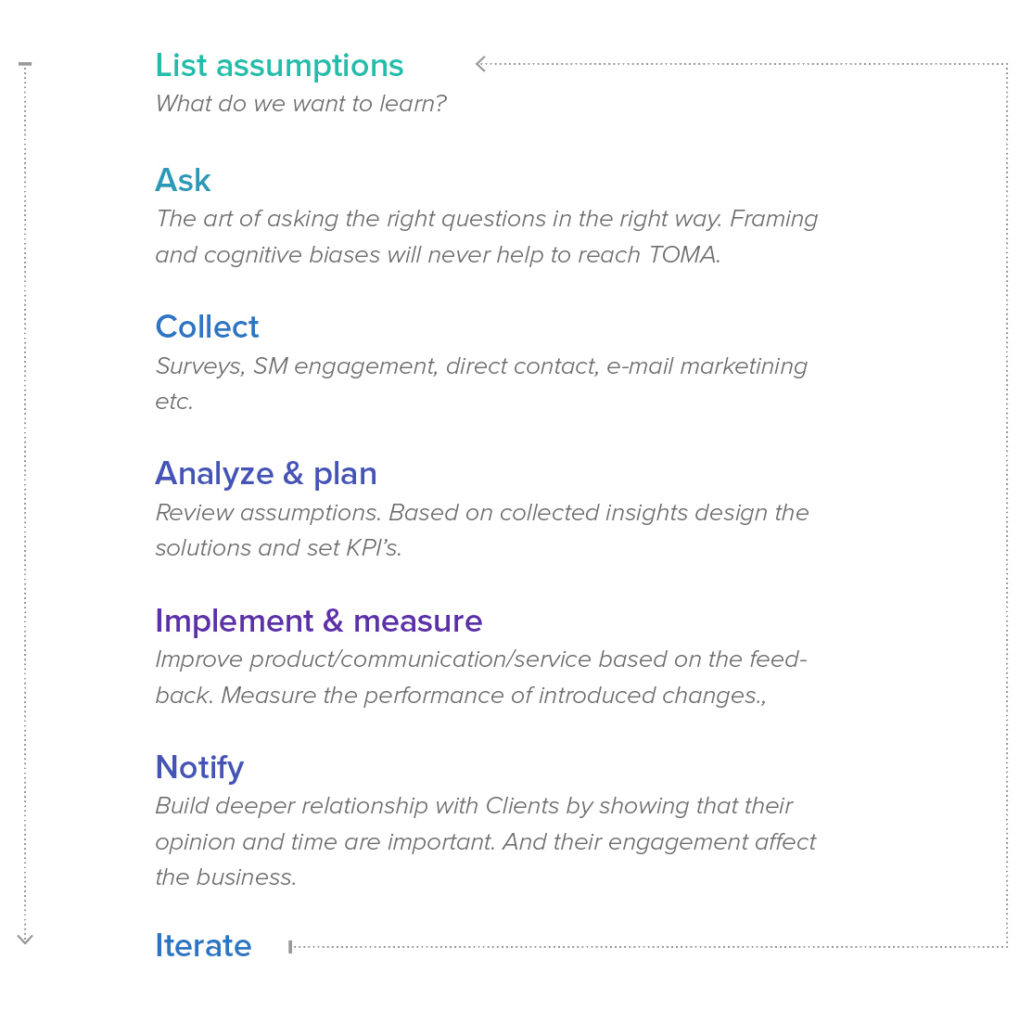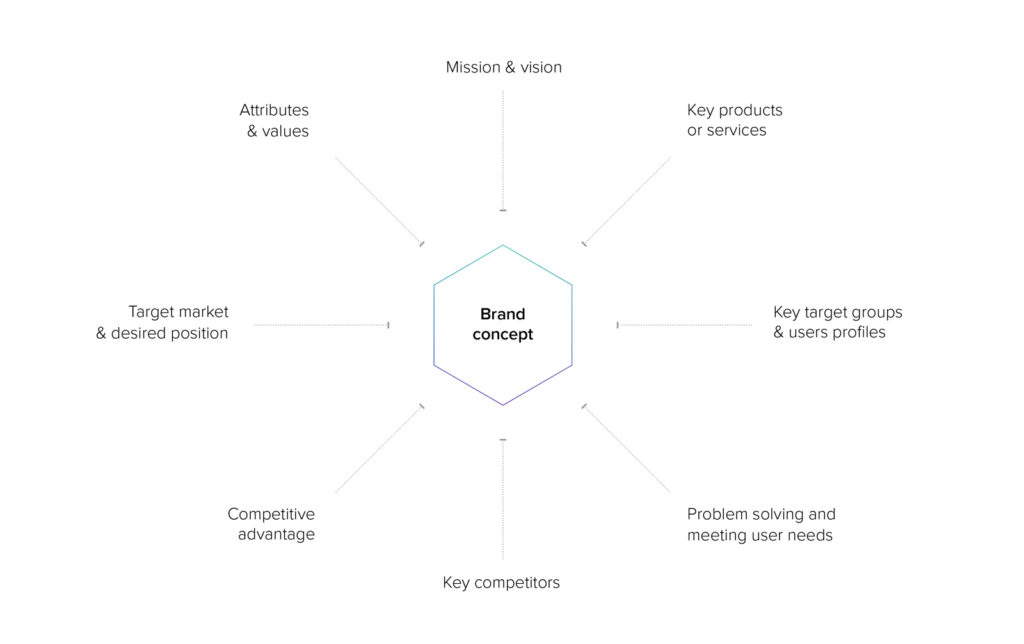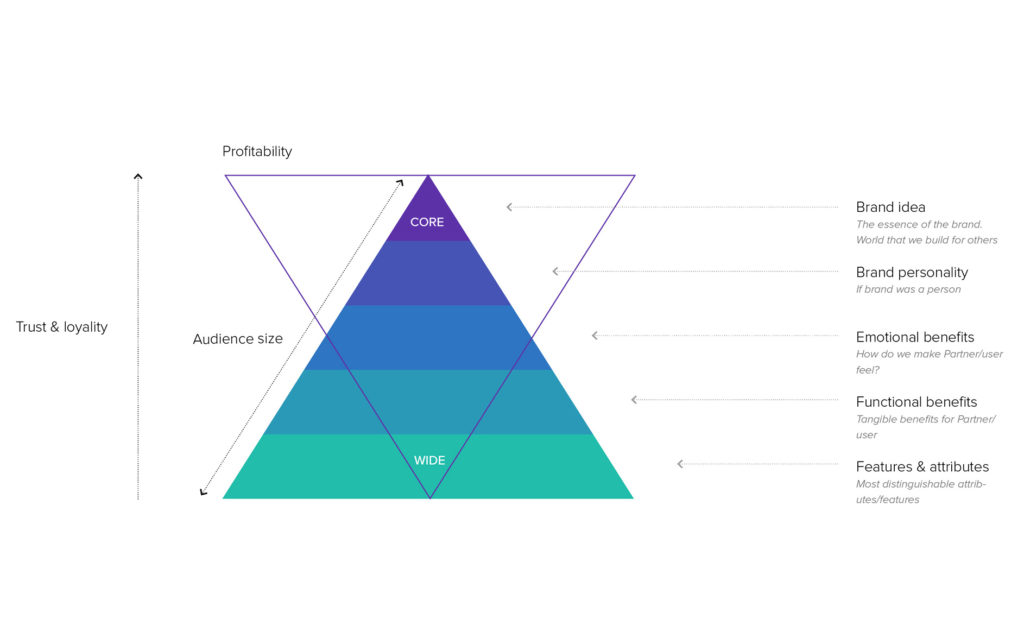Stileo
Brand strategy & repositioning
Overview
Stileo.it is the biggest online fashion aggregator in Italy, recording 26 million unique users per year. For its customers, it serves as an online fashion house where they are able to easily search through millions of products that are available in other on-line shops. For Stileo Partners (B2B), the platform is a valuable source of new, high-conversion traffic.
Challenges
- B2C: Obtaining a new user segment to expand the business’s scale.
- B2B: Acquiring brands from the premium and accessible luxury segments.
- Transforming the brand perception from a marketing aggregator to a fashion platform.
Responsibilities
- Conducted market research and gathered feedback from customers and users.
- Created a new brand strategy.
- Established an agile framework to test new brand assets.
- Led the entire rebranding process.
Problem analysis
The main audience of the platform was mass consumers looking for discounts and deals. That’s why the brands and stores available on Stileo were mass-market fashion brands.
Attracting new customers required having different fashion brands on Stileo. Therefore, the main objective was to convince premium brands to start appearing on the platform.
Unfortunately, we couldn’t acquire any significant partners. So together with the sales department, we asked representatives of those companies for feedback. It turned out that our offer was appealing to them, and they would have benefited from our services if it weren’t for one thing: our platform didn’t look like a place where such brands would want to be showcased.
„Our customers expect a better experience when they buy our clothes than what you’re offering,” we read in one of the comments. All the reasons clearly indicated that the current positioning of the Stileo brand needed to undergo some changes in order to attract a new segment of users.
The best example of the status quo – homepage
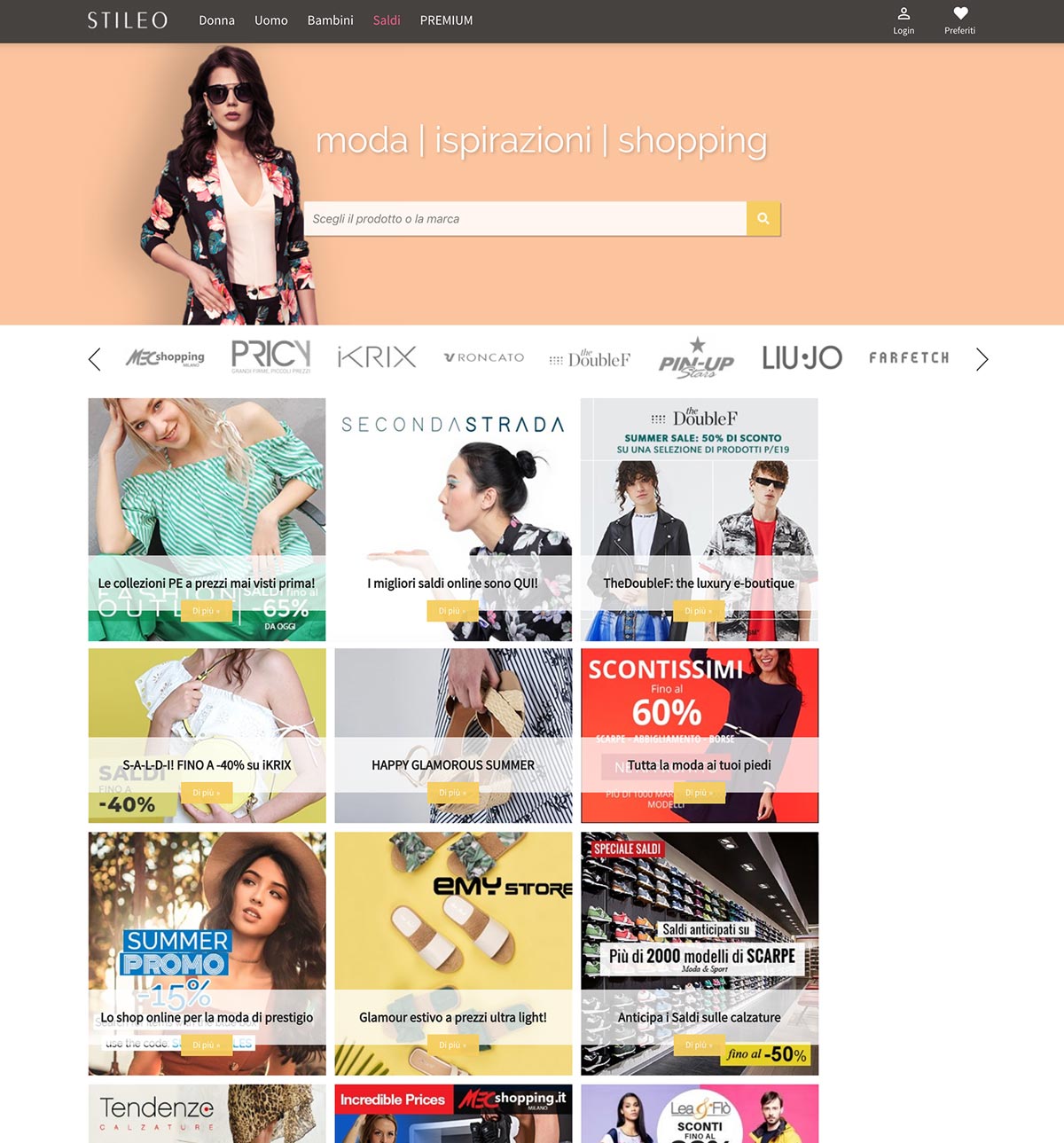
Approach
In response to the collected requirements from potential clients, I developed a brand strategy and personally led the rebranding process to change the brand’s positioning.
Regarding the brand positioning changes, the most important modifications included:
- Changing the corporate colours.
- Updating the style and visual elements of both the platform and marketing materials.
- Enhancing UX of the platform.
- Revamping the photography style.
- Introducing fashion seasons reflected in visual materials.
- Creating dedicated visually appealing pages for premium brands.
- Updating sales materials to align with the new strategy.
The power of Photographs
To achieve the set goals, the new photos had to reflect the more fashionable character of the service while aligning with the expectations of the existing audience. We decided to abandon the previous photos that showcased sales and offline shopping. Instead, we focused on the digital fashion experience, stylish compositions, and emotions. There was no room anymore for artificial, stock photos that conveyed a sense of cheapness and mass production.












Product redesign
The most crucial aspect of repositioning the Stileo brand was the complete redesign of the entire platform. This involved not only rebranding, which encompassed CI, UI & UX, but also the development of new functionalities, SEO requirements, and technological changes. You can find a dedicated case study that delves deeper into this topic here.
Speaking of repositioning, the change in colors, visual style, product presentation methods, and the addition of special sections for stylish fashion photos influenced how Stileo was perceived by partners. The modern solutions and improved user experience not only had a direct impact on marketing and sales KPIs but also on the overall evaluation of the platform by users. The design of new, dedicated sections for premium brands attracted the interest of our potential B2B partners. But…was it enough?
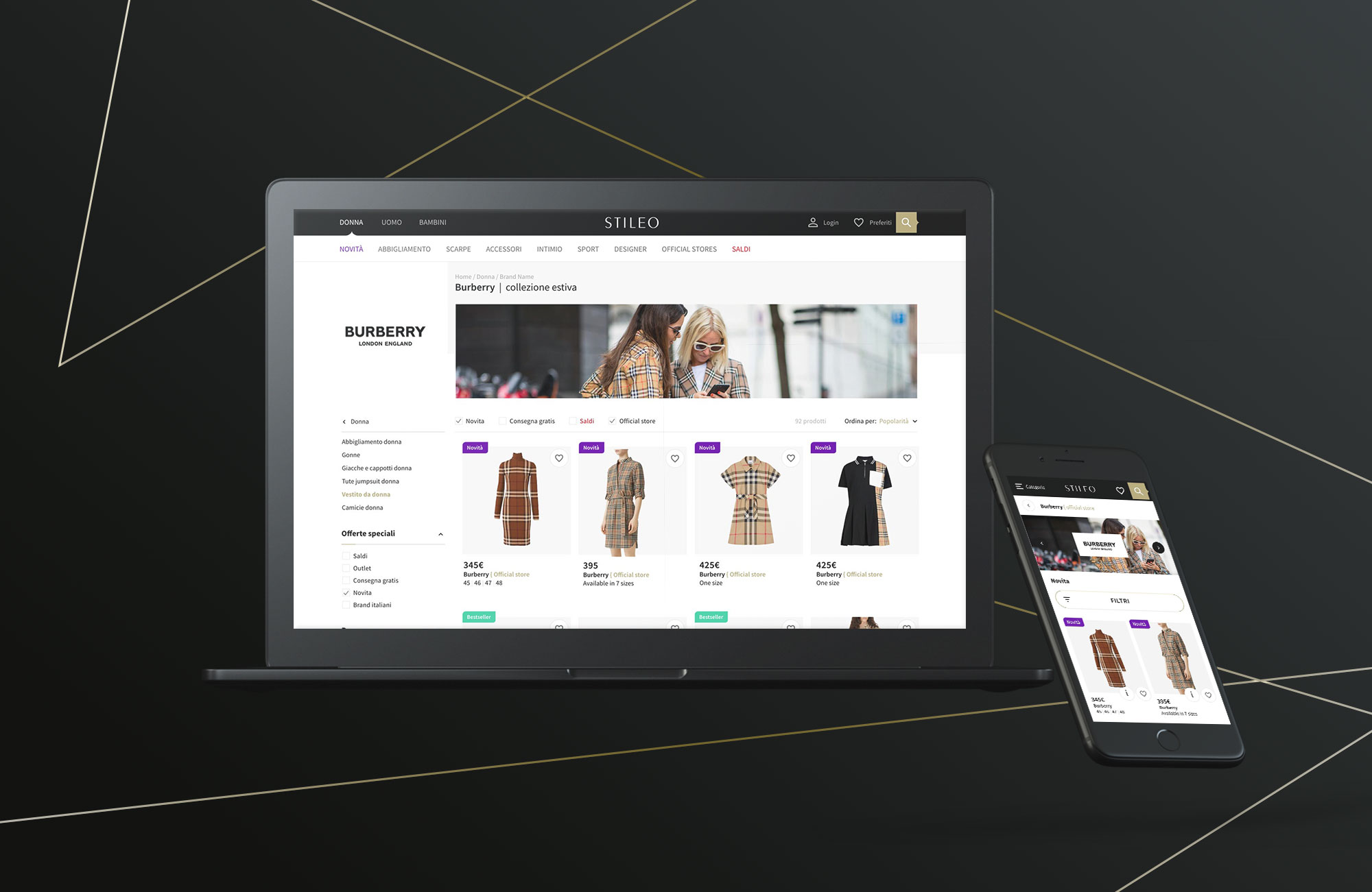
Outcome
Both the changes implemented on the platform and in the marketing materials underwent continuous testing and adjustments to align with our business goals and meet the expectations of our target audience. Notably, the new visual updates of important subpages received approval from our key partners, whom we sought to attract.
Thanks to this iterative approach, the rebranding process was successfully developed and implemented in a remarkably short span of fewer than 6 months.
The change in our brand image proved to be a resounding success. It enabled us to secure partnerships with renowned brands such as Gucci, Prada, Michael Kors, and even Burberry in the subsequent months. This, combined with the brand’s enhanced fashion appeal, attracted new customers that Stileo aimed to serve.
Old vs. rebranded homepage comparison

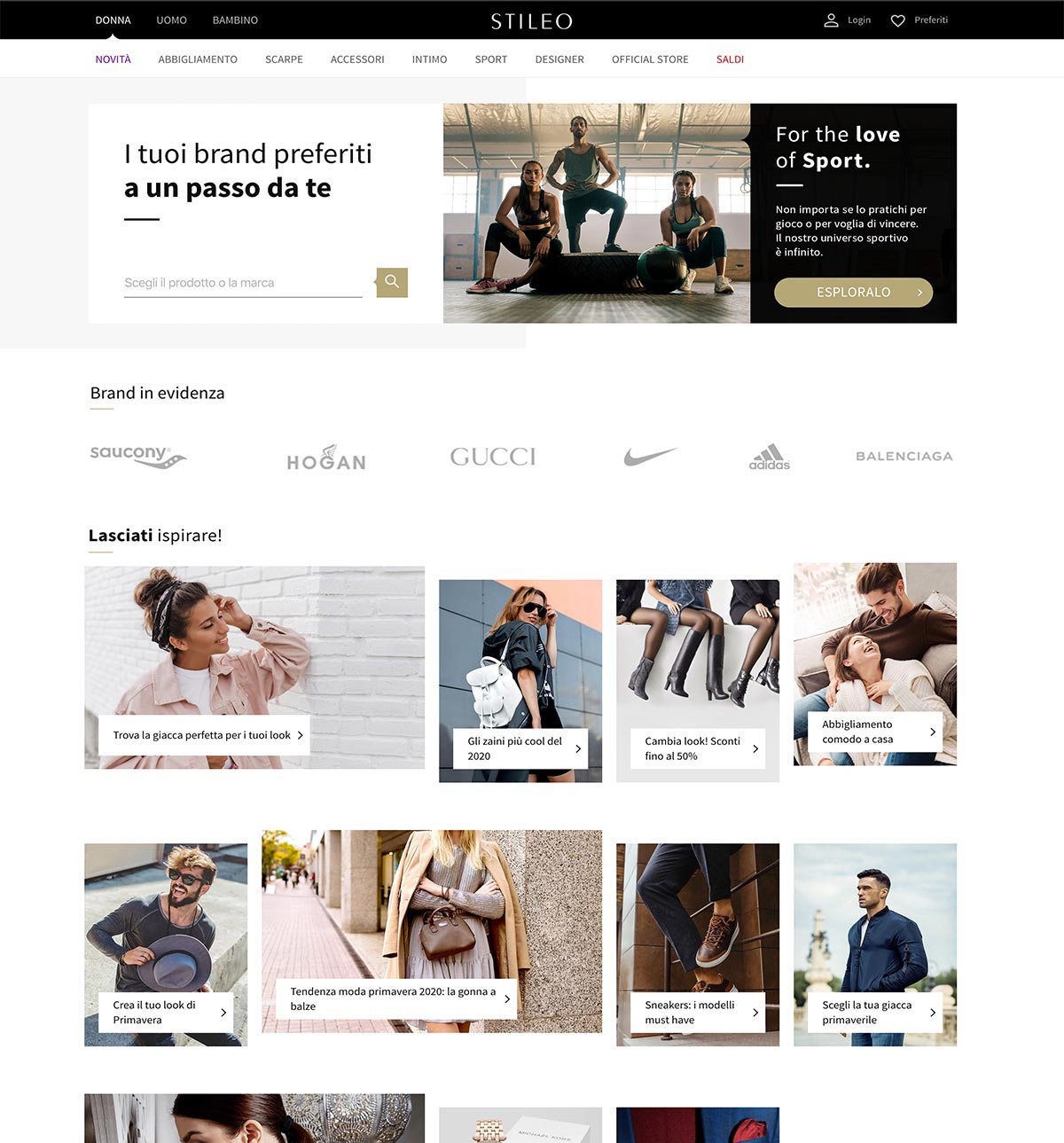
Stileo brand strategy
methodology
Brand concept
I ran numerous parallel processes to develop and define the brand concept, a set of essentials that produced a distinctive and consistent brand. This included internal surveys, workshops, working closely with different teams to understand the variety of business needs, gathering feedback from Stileo’s Partners (B2B), analysing users on social media and overall industry research.
This holistic approach allowed me to not only understand the business and its environment but to create solutions, assess respective KPI’s and enhance the performance of other business areas as well.
Introduction of the Agile Branding in Stileo
I created an agile framework to develop the strategy in an iterative manner, checking assumptions and gradually determining how the brand should function and be developed/created within the given circumstances. The brand concept remains the same, but the way brand is cultivated and maintained, in a two-way relationship/communication with the target audience, is something that needs to be constantly improved.
B2B & B2C feedback loops
The frameworks for these were developed and introduced as an outcome of the brand concept. Stileo’s main personality – „Everyman” was based on the value of belonging and inclusiveness.
Supporting personalities were: “Explorer” for B2C purposes (covering the users’ desire for freedom in fashion) and „Sage” in B2B relationships, as an answer to the Partners’ need to be understood and receive advice from the company.
The 3 abovementioned key personalities were the cornerstones for creating a brand that closely listens to what its target audiences have to say. Two-way communication via social media activities, feedback gathered through surveys and indirect relationships helped to create a connection with the users. It also showed that users can impact the business in a positive manner. At the same time, it allowed for better alignment with the Partners’ needs. Another challenge came in the form of 5 years worth of social media communication history. It had not been engaging the users in a meaningful enough way. Therefore, the B2C feedback loop required months to establish grounds on which a valuable relationship with users could be built.
